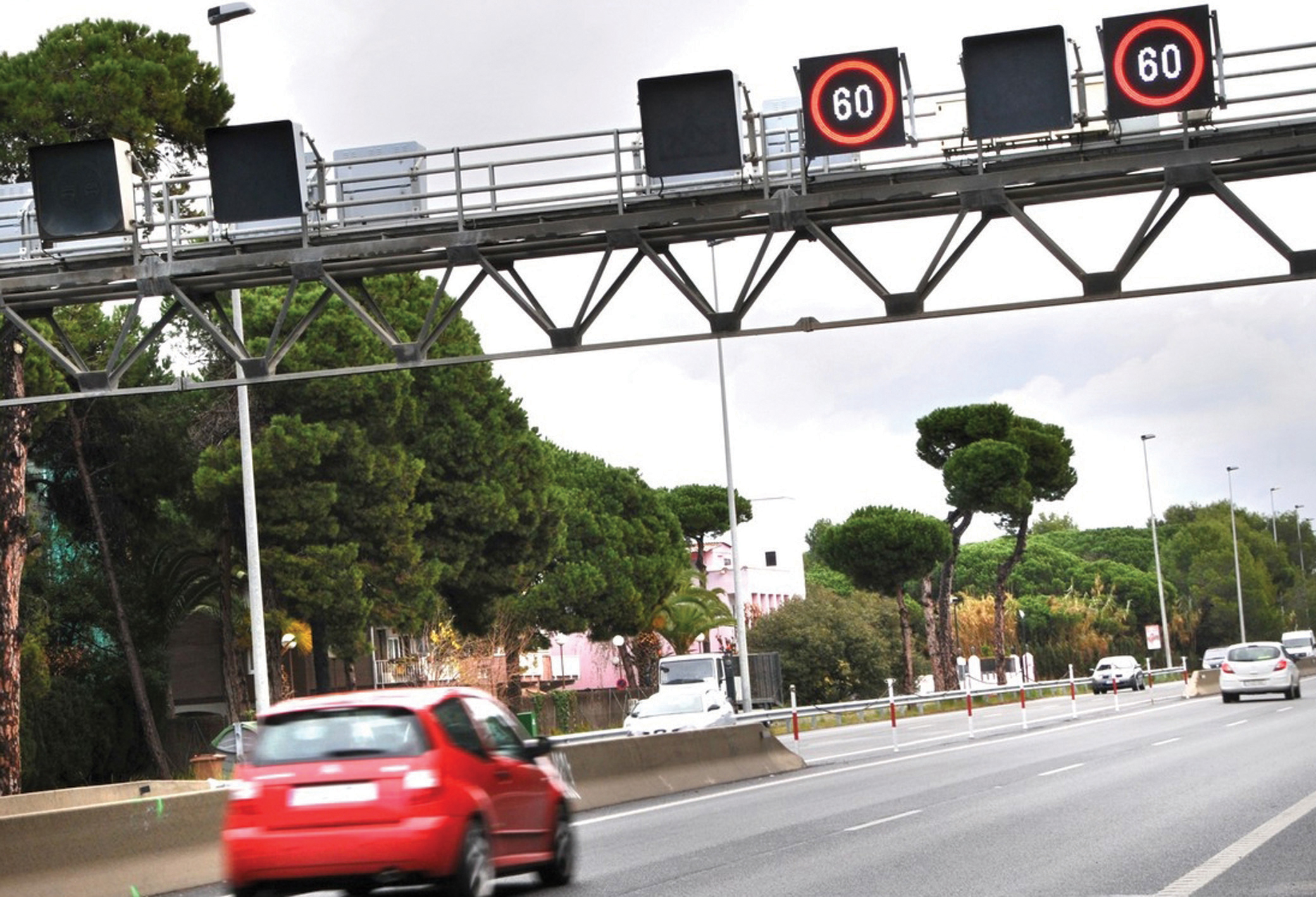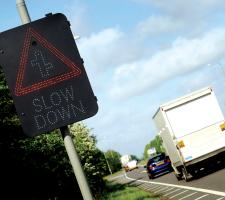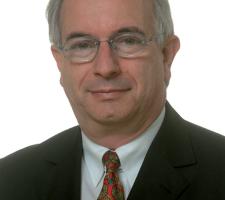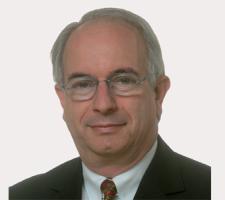
Many people are familiar with a limited number of ITS applications, such as personal navigation or overhead signs, but somewhat fewer are aware of ITS's wider potential for improving mobility
ITS needs to be sold to politicians in plainer terms and we need to be encouraging greater continuity at the policy-making level says Josef Czako, chairman of the IRF's Policy Committee on ITS
At the"The development of road infrastructure is today very much influenced by technology, not just the physical elements of road-building materials. ITS plays a significant and fundamental role in road operation, including the longer-term ability to maintain or enhance the road infrastructure. It's helping to improve road usage for car and truck drivers, and also the business case for the road operator. But I'd disagree with any assertion that technologies which can address safety, environmental and congestion issues are deployed on a wide enough scale at present," he says. "It's probably due to a lack of understanding by both policy-makers and the wider public of the benefits or socio-economic advantages, and the positive business models associated with ITS.
"On 6 July 2010, the European Parliament adopted the proposal for a Directive on the deployment of ITS in the field of road transport, following an earlier positive vote of the Council of the
The first 12 months of the Policy Committee's existence were given over to the setting up of its various working structures and finding worldwide members. These are now finalised and it is now working towards publication and presentation, at the 2011 ITS World Congress in Orlando, of a first handbook and database which will explain ITS and its benefits. The database, currently being populated, will be a collection of existing ITS projects worldwide. The effort underlines the huge educational process which needs to go on and which is still in its infancy, according to Czako.
"The 'headline story'," he continues, "is that ITS is hugely important. If a country or region doesn't have an ITS policy, then there is no will, no budget and no tender process which will make deployment happen. Thus roads will not be repaired, congestion levels will remain unchanged, numbers of accidents will not be reduced, and the environment will continue to suffer.
"We have plenty of technology showcases, and these are all very well, but in many ways they just exist in the laboratory. We need to be getting these systems out where they can increase safety and convenience, and develop successful financing of ITS and infrastructure."
Benefits calculation model
"The Policy Committee is setting up a generic benefits calculation model which will help with this. For politicians, a generic formula which would 'prove' the results would be a vote-winner and a money-saver. We don't have such a thing as yet."Take overweight trucks as an example - they destroy pavement surfaces. But if a country or state were to install weigh-in-motion on a random basis and at its borders, that would go a long way to combating the problems caused by both domestic and transiting heavy goods vehicles. Similarly, if you can somehow calculate both the direct and socio-economic costs of a road accident then you can build a case for, for example, eCall or a dynamic traffic management scheme to beat congestion. Congestion costs are very high for any economy, in Europe they amount to around 1.2 per cent of total GDP.
"A lot of information is already produced and made available using intelligent infrastructure, including that for measuring traffic flow, detecting incidents, tracking vehicles and providing real-time traffic information. The volume of this information is likely to increase. Ensuring data interoperability between different systems is a key challenge in the long term. The future innovation in intelligent infrastructure comes less from technology and more from the way information is transformed, distributed and shared.
"We're not going to deliver a precise formula for each and every ITS application, but a generic methodology for analysis, quantification and justification for ITS, because every project is different and depends on the local framework - implementing ITS services in India would have to take account of some very different factors than implementing them in the US, for instance."
Promoting change
"Too often, the discussion is a technical one, not a socio-economic one. We have to work to change that - although we are starting to see change."People are aware of just a very few ITS applications. They have personal navigation and they see overhead information signs but they don't appreciate the entire possibilities of ITS to improve mobility. They know some applications and not the term - how many people really know what 'ITS' means? We possibly need a new name and we're looking at that - at our last Committee meeting in Brussels we brainstormed new possibilities. How we pay for ITS services also needs more thought because they aren't free, either to governments or road users." Looking at technologies and deployments from a socio-economic or cost-benefit perspective is nothing new. Now, though, money is tight. Decision-makers are looking again and asking with an increased sense of urgency for the commercial justification.
Czako refers again to the eCall example: "It's a 10 year-old application. The US has a form of it in GM's OnStar but no-one in Europe has adopted it on a country-wide basis. The European Commission now has it as a priority item on its agenda and it's looking for reasons for having it. So we're seeing questions like 'How much is a life worth?' and 'What's the cost of congestion caused by slower responses to incidents?' There's a higher sensitivity in terms of what ITS technologies add to society, so we are coming away from technology being the prime driver of discussion." That, he says, leads naturally into a discussion of some of the aspects of politics which need to be changed.
"A big problem for ITS and indeed any major infrastructural area is the frequency with which politicians enter and leave office. Typically, a public official is established in a position for about four years and only once he or she is appointed does the education process begin. We're talking about a couple of years for that to start to bear any fruit. Shortly after the two-year point, the public official starts to develop his or her own vision of the way forward. That probably takes another couple of years and then he or she moves on and we're left to restart the process. This happens over and over again.
"It's one thing that the handbook and database are intended to address, as senior politicians will be able to use it to get up to speed much, much quicker. Really, though, we need to tear down the walls where ITS is concerned. We have to stop ITS being the political domain of 'Party A' such that the natural inclination of 'Party B' is to oppose its use. Common sense - indeed, any mature, considered sense of progress and what's needed - says that when our political leaderships change ITS should remain."
Universal truths
"Taking ITS out of the political discussion and making it common currency requires a universal understanding and acceptance of its benefits. That isn't in itself a wholly new concept - we can look to Scandinavia as an example of where it's common to have coalition governments of several parties, all of which have an appreciation of what's needed. The idea of ITS being considered along partisan lines is in any case absurd; transportation should be regarded as an essential infrastructural need like any other - you don't see politicians arguing on party lines over whether the supply of clean, fresh water is a necessity, for example - but the reality is that we're a long way away from that at the moment."Another challenge ITS has to overcome in the political environment is the focus on short-term solutions. The goal is to reach a common understanding such that by investing in ITS today public officials can create benefits for the coming decades, some of which will only become visible when those officials have themselves left office. But that shouldn't make ITS less of a priority." An historical problem in this regard, he feels, is that the ITS industry has for whatever reasons allowed itself to become regarded as a seller of products rather than benefits.
"The push and pull factors are out of synchronisation, another thing which pushes the need for education. The media have a role here, both in terms of the specialised technical press and the more general mass-market publications. We have to target not just those who understand the technology but also outsiders. My vision is that the IRF's handbook or brochure will address mainly the public side of the debate and open the door to a wider understanding of ITS's potential." Currently, he says, there is an open invitation from the IRF to all relevant stakeholders who would wish to get involved in the work.
"We've a good level of outreach in Western and Eastern Europe, in South Africa and Australia. We're building contacts in North America but South America needs more work. Every meeting of the Policy Committee is a working meeting and we're making every effort to increase participation. Our next meeting is in Leeds in the UK, for example, so that opens the door for the UK
"It's for them to install policies and initiate funding for ITS," he concludes. "That's why education is so important."








